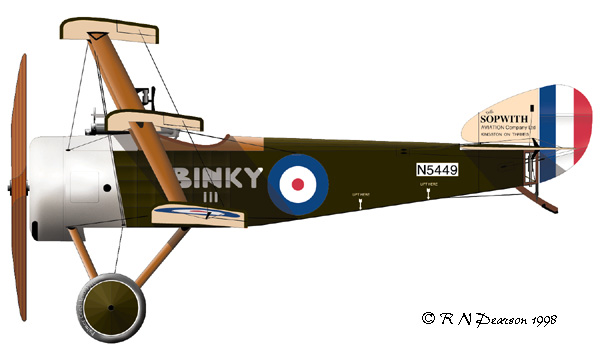Design and Development:
In april of 1917 the Royal Naval Air service introduced the Sopwith triplane for teh first time in teh skies of Flanders and France. The british triplane impressed the geramn pilots because proved itself better than the Aldatros and Halbertstadt scout in use by the central powers.
Von Richthofen wrote after an encounter with one:
" The Sopwith triplane is definately the best aircraft the enemy pocess, it climb better than the Albatros , is more maneouvrable and did not loose altitude in a bank , also it can be dive straigh down …"
Sopwith Triplane N5449
No. 8(N) Sqn RNAS
April 1917

The Dutch designer Anthony Fokker had gaines international reputation with the introduction of the “Eindecker” in mid 1915, however the E-1 reign was short , in The battle of Somme in July 1916 the Fokker type was wiped out by the more modern and faster Nieuports and DH-2s.
After the Idflieg ( inspectore of flying troops) requested design for a new triplane fighter to deal with the Sopwiths and SPADs.
Some people thought that Reinhold Platz had copied the design of the Sopwith Triplane but in fact Reinhold hadn’t seen the Sopwith Triplane before he started to design the Fokker Dr 1.
During the designing he made a prototype called V3 which suffered from severe wing vibration. So the next prototype (V4) was fitted with hollow struts to minimize the vibration. The final design had redesigned ailerons and elevators. Fokker, Anthony Herman Gerald was the manufacturer of the Fokker Dr 1. He was ordered to produce 320 Fokker Dr 1’s on July 14, 1917. Tony Fokker personally delivered the first Fokker Dr 1 to the Red Baron.
The first Fokker Dr 1’s appeared over the ‘Western Front’ in 31 August 1917.
Anthony Fokker in the cockpit of the pre-series Werk Nummer F1 102/17, Marckebeeke airfiled, 31th august 1917.








